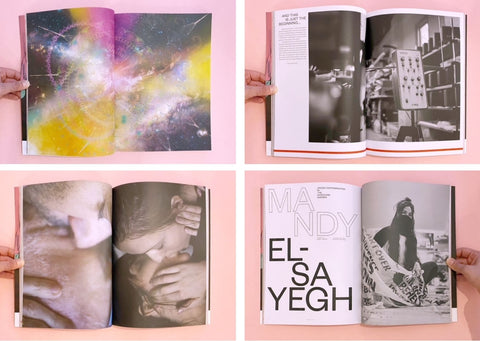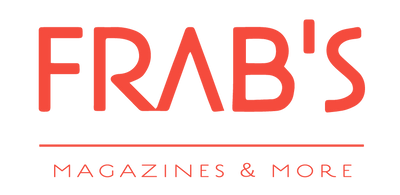Yes & No magazine: the complexity of reality and people
After leafing through its pages, I understand why Yes & No is defined as a surreal and provocative magazine. Its goal is clear from the first line: to tell the complexity of life, in all its nuances and from all possible angles, rejecting any binary vision. Nothing "yes The no ”, but rather“ yes And no ”, taking into account, above all, everything in between.
For those who do not yet know it, the magazine pursues its search for complexity through the subjects of art, technology and science, without forgetting to take a look at the future. The main actors, however, are the people. Extravagant, passionate and inspiring people. People who have managed to make their dreams come true, such as the winners of the Breakthrough Prize, to whom the fourth issue of the magazine is dedicated: those men and women who have revealed mysterious aspects of reality, allowing us to become more prepared to face the challenges of present.
Yes & No founder Cassius Matthias says the magazine is more interested in raising questions than offering answers. Not surprisingly, the first question is posed already starting from the editorial. How can we grasp the truth of things? That is, how can we make sense of contemporary life? Matthias, remaining consistent with the aims of his project, confesses that he does not have an answer: perhaps the clues are hidden in the little things, the few that really matter.

Returning to the issue of the issue, the Breakthrough Prize clashes with the gap between the artistic-literary and scientific-mathematical culture. This gap has an immediate and practical consequence: although the products of science and technology are more than ever integrated into our social and cultural lives, too often we fail to understand them. The award therefore wants to remind us that these two cultures are, in reality, one. Science and art are driven by a single common engine: the power of curiosity, a network of ideas and desires that drives our evolution. The international initiative wants to offer recognition to all the scientific personalities who with courage and creativity have decided to take a risk, achieving pioneering results.
Stephen Hawking, protagonist of the cover of this fourth issue, is an extraordinary example of this: he was one of the first physicists to identify ways to connect quantum theory to that of relativity, joining two world views hitherto considered antithetical.
Like him is Huda Zoghbi, who grew up in Beirut in the midst of a civil war; after moving to the United States she became an important geneticist and helped to clarify a series of mechanisms responsible for devastating neurological disorders.
And again, James Allison, an immunologist who has conducted cutting-edge research in the field of cancer therapies, Shinya Yamanaka, a doctor who is credited with having identified new methods to generate pluripotent stem cells and, finally, Jocelyn Bell Burnell, discoverer of the first pulsar, the dense core of a supernova.
The power of the magazine lies in being able to represent each individual in his pure and honest humanity. An aspect that transpires not only from the interviews - in which scientific personalities reveal their professional and personal disappointments, the difficulties of having to make their way in a hostile environment, bewilderment and fear - but also and above all from the images. In fact, we are offered the incredible privilege of being able to observe Hawking's office, or even a page of Huda Zoghbi's notebook, with his handwriting fast and tilted to the left. It may perhaps surprise you, then, that one of the most authoritative and well-known physicists in the world had an electric heater identical to ours. Yet it is these details, which the magazine is able to perfectly capture and narrate, that remind us that we are dealing, first of all, with people.
Among the infinite reflections contained in Yes & No, we also find: a consideration by Daniel Richter on the authoritarian and self-destructive attitude typical of artistic circles, often linked to the cliché of an exasperated virility; the celebration of collage, an underestimated artistic form and expression of a clash capable of uniting opposites in something deeper (just like Yes & No); a journey into electronic music from the distant 1920s; an in-depth study on The Drunk Boat by Arthur Rimbaud, a composition full of mysteries, perfect exemplification of the attempt to understand the complexity of things and the unknown towards which, without escape, we head; finally, a denunciation on the climate emergency, to remind us that it is not, and cannot be, a new normal, contrary to what is often narrated by rhetoric.
The articulated and twisted plots the magazine is interested in are therefore inevitably transposed into its editorial structure. Yes & No challenges the traditional arrangements of independent magazines, starting with the most important element: the cover. The latter, in fact, not only does not have a clear header, but uses the logo in an incomplete manner. Then there is the index, a jumble of numbers in which it is difficult to understand the succession of contents. Again, it happens that to finish the articles it is necessary to jump to the end of the volume, bypassing a substantial number of pages and breaking the reading. The entire experience of use therefore seems to follow the idea of a montage, or rather a collage (here it is, again, appearing), of elements and stories that we are called to recompose. A process that probably will not come to its conclusion with only the number 4, as suggested by the "to be continued" written at the end of more than one contribution.
As an illustrator I tried to tell this magazine from a visual point of view. It was quite difficult, but I managed to make three different images, trying to be as consistent with the personality of the magazine as possible. The three illustrations tell three different themes, which I believe are central to this issue of Yes & No.
- The first wants to tell how people are the absolute protagonists of the publishing project: people we often don't know and who tell about themselves in their inner complexity and their "being".
- The second image reflects on the magazine's explicit desire to raise questions, trying to establish a direct dialogue with the reader.
- The third, finally, visually represents a collage, the expressive form on which Yes & No is based and which is mentioned several times within the issue.
To create the illustrations I worked on the latter technique: overlapping drawings, writings and the works of art of the artists interviewed (Daniel Richter, Deborah Remington, Mandy El Sayegh). In fact, if the review focuses, on a textual level, above all on the scientific personalities of this fourth issue, the images highlight, as a counterpart, the artists.



Yes & No, with 139 pages that address perhaps as many themes and opposites - past and future, analogue and digital, concrete and abstract, man and machine - wants to invite us to seek our personal answers. He suggests that we do it through exploration, the only method that can allow us to go deep into what we can probe and understand. Because knowledge is, first of all, a human necessity. The time has therefore come to ask ourselves: where can we start?
